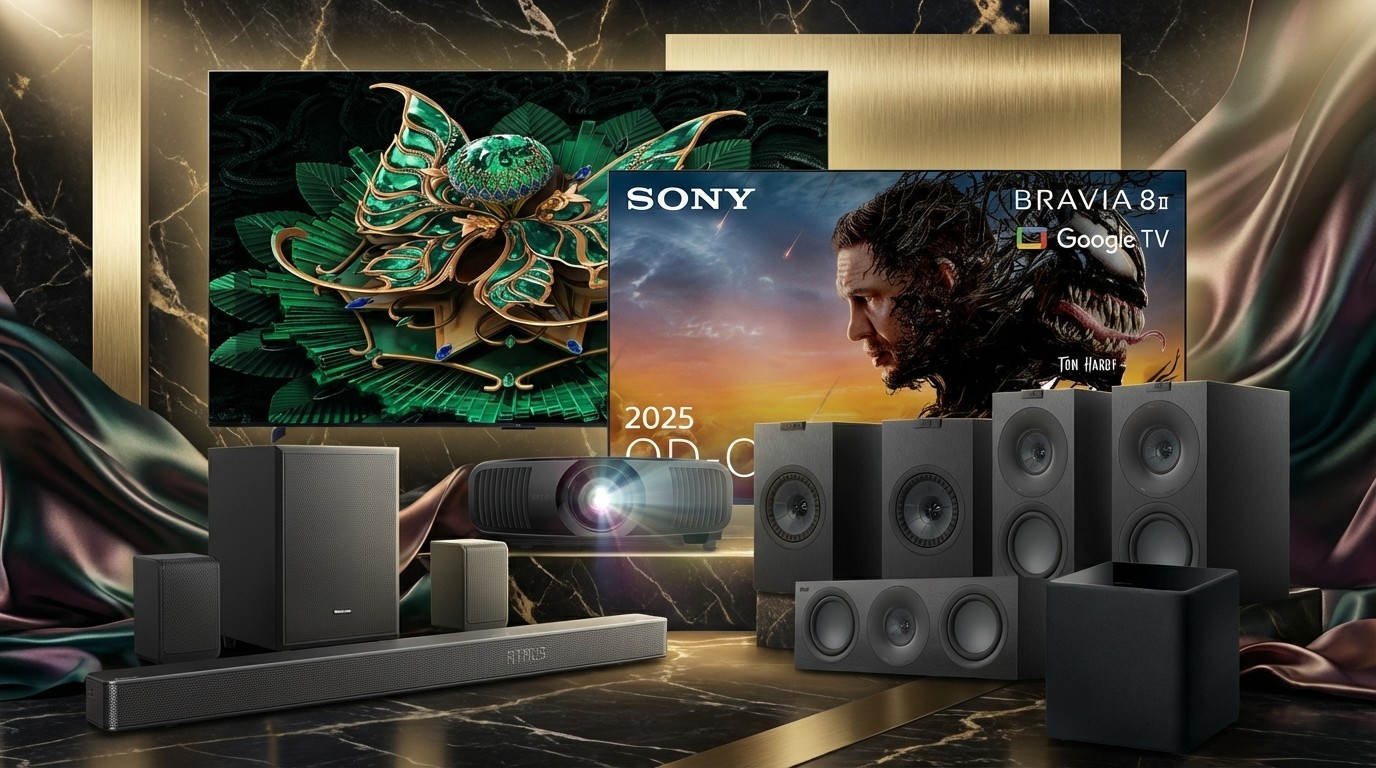What Hi-Fi? Verdict
The exceptional subtlety, balance and naturalism of the Sony X85L’s pictures make it great value for serious AV fans
Pros
- +
Excellent contrast and backlight control
- +
Beautifully controlled colours
- +
Outstanding motion handling
Cons
- -
Finicky gaming set-up
- -
Some clipping with HDR highlights
- -
No HDR10+ support
Why you can trust What Hi-Fi?
For the past couple of years Sony’s X85 series has represented the cheapest part of the brand’s TV range where you could feel confident that you’ll still be getting a seriously satisfying level of picture quality. Chiefly because X85 sets pretty much all combine high-contrast VA (rather than low-contrast IPS) LCD panels with direct (rather than edge-mounted) LED lighting.
This year’s X85Ls, though, as represented here by the 55-inch KD-55X85L, have taken a welcome step forward by adding local dimming to their specification, opening up the possibility of a much better contrast and HDR performance. Especially given Sony’s impressive reputation for getting exceptional results even from quite limited numbers of local dimming zones.
Price

At £999 in the UK and $1695 in Australia, the Sony KD-55X85L’s pricing perfectly fits its mid-range status in the Japanese brand’s 2023 range. There are for sure plenty of reasonably well-specified 55-inch rivals around that cost less, but the addition of local dimming to a direct LED lighting system, VA panel and Sony’s renowned video processing ensure that it doesn’t look expensive.
If you want to step up to the 65-inch X85L you’ll need £1299 / AU$1995, or if you want to step up to the 55-inch X90L, which features a higher local dimming zone count, more powerful video processing, and a more powerful audio system, you’ll also need £1299 / AU$1995.
The most prominent budget competition for the X85L comes from TCL’s C845K, which offers Mini LED rather than regular LED lighting, massive amounts of brightness, and hundreds of dimming zones for just £849.
At the time of writing, the X85L series is not available in the US.
Design
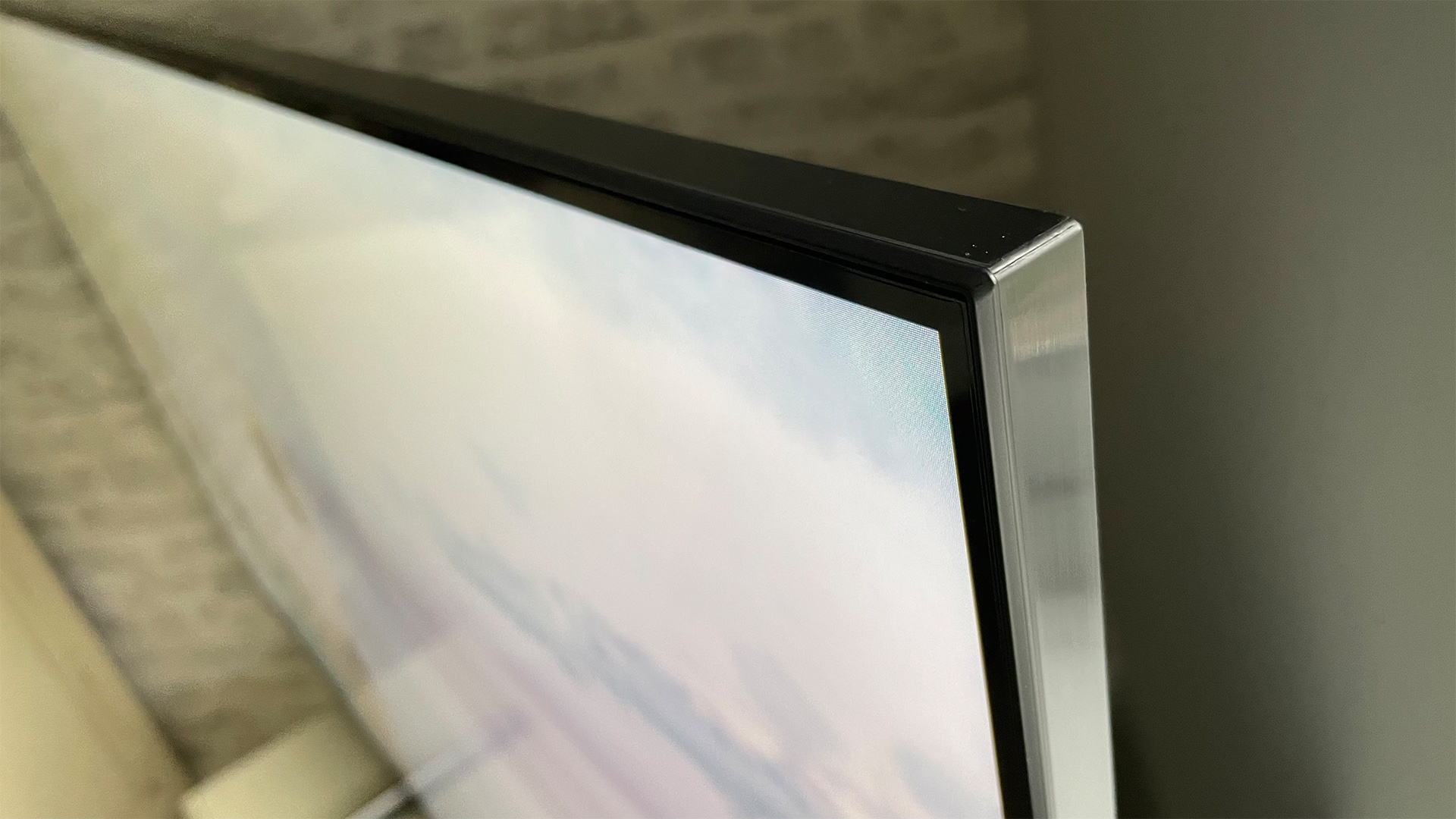
Sony’s TV design department is all about minimalism these days, and the X85L fits this brief to a tee. There’s a bare minimum of black frame sitting around the 55-inch screen, and the screen and its frame blend together to form a single elegant flush surface.
The latest hi-fi, home cinema and tech news, reviews, buying advice and deals, direct to your inbox.
The two blade-style feet the screen sits on are so slim, too, that if you’re watching the TV from directly in front you can barely see them. All of this minimalism helps to focus your attention nicely on the pictures the TV is producing, rather than the hardware that’s producing them.
Sony thoughtfully allows the feet to be attached in a wide or narrow configuration, to suit the width of whatever bit of furniture you want to sit your new TV on – or whether or not you want to place a soundbar under the screen.
Features
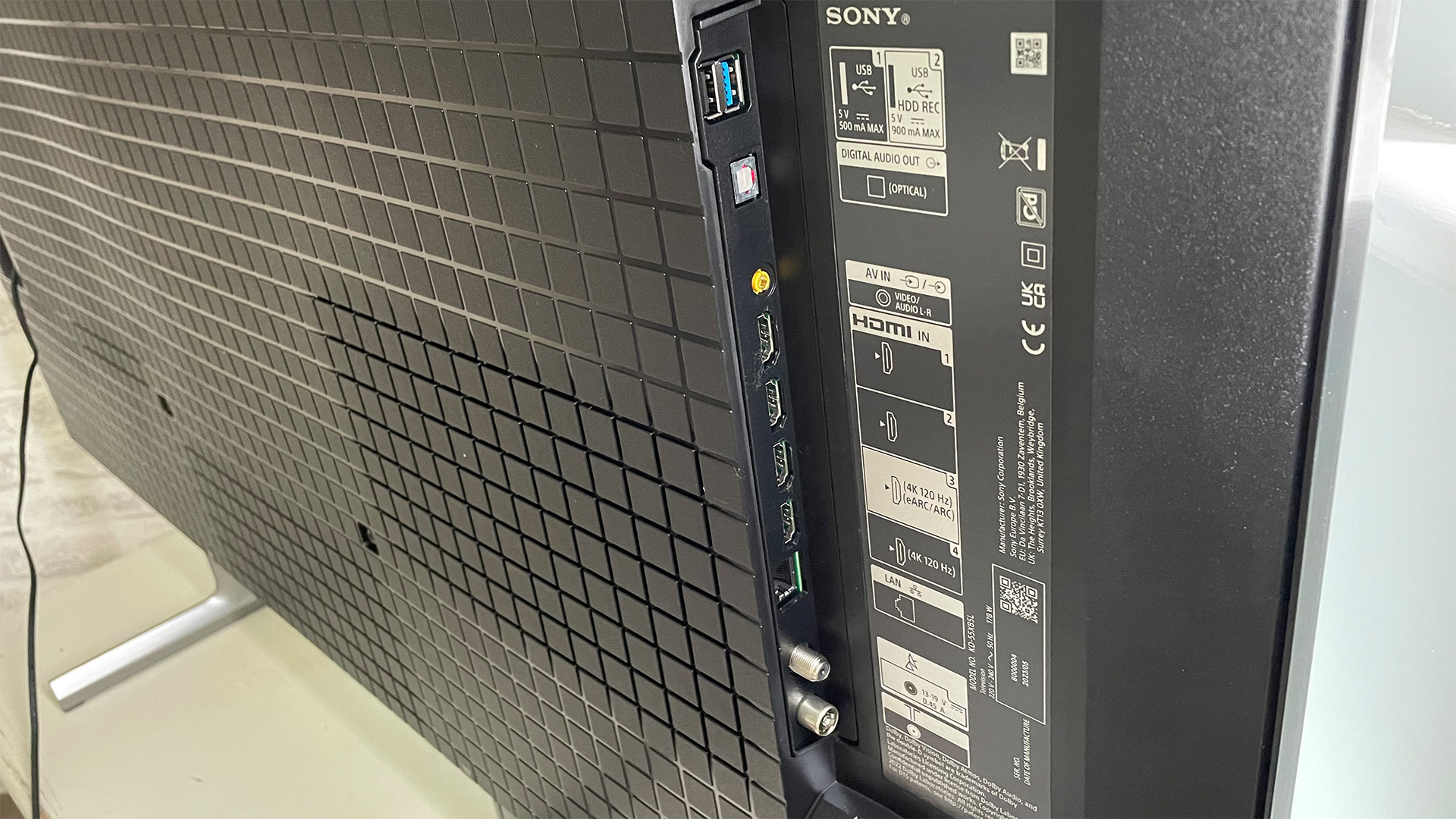
The Sony X85L ticks most of the boxes serious AV fans shopping to this budget will be looking for. For starters, it uses a contrast-rich VA type of panel (though this does limit its effective viewing angles) that it illuminates using LEDs positioned directly behind the screen rather than around its edges. Such direct lighting almost always has the potential to deliver better light control, but as mentioned earlier, Sony hasn’t left it there for the X85L range, adding a local dimming system. A quick ‘head count’ of the dimming zones of our 55-inch sample, though, reveals that there only appear to be 24 of them.
That really doesn’t sound a lot when you consider that the recently reviewed 65-inch TCL C845K has 576 dimming zones despite costing roughly the same amount (and being larger). We’ve had plenty of first-hand experience over recent years, though, of some TVs delivering better results from limited dimming zone counts than other TVs manage from high zone counts – and Sony has been at the forefront of those TVs that consistently punch above their dimming-zone count weight.

Screen size 55 inches (also available in 65in and 75in)
Type LCD
Backlight Direct LED
Resolution 4K
HDR formats HLG, HDR10, Dolby Vision
Operating system Google TV
HDMI inputs x 4 (2 x HDMI 2.1)
Gaming features 4K/120Hz, VRR, ALLM
ARC/eARC eARC
Optical output? Yes
Dimensions (hwd, without stand) 71 x 123 x 5.6cm
This is likely a result, at least in part, of Sony’s picture-processing prowess. The X85L, though, carries Sony’s now slightly ageing X1 brain rather than the more recent Cognitive XR processor. The X1 processor still has a strong reputation for its handling of colour, backlighting, detailing and motion, but it likely won’t deliver quite such natural, three-dimensional and refined pictures as Sony’s Cognitive XR models.
The X85L’s connections comprise four HDMIs, two USBs, one composite video input, satellite and terrestrial tuner inputs, one digital audio output and an Ethernet port. Plus, of course, there are both wi-fi and Bluetooth wireless options. Two of the four HDMIs are capable of handling the key ‘HDMI 2.1’ gaming features of 4K/120Hz feeds, VRR and ALLM. Plus there’s support for the exclusive PlayStation 5 features of Auto HDR Tone Mapping, where the console can detect the exact model of Sony TV it’s connected to and adjust its HDR output accordingly, and Auto Genre Picture Mode selection.
The 2.1 HDMIs also support eARC technology, where the TV can pass out lossless Dolby Atmos soundtracks over HDMI to eARC-compatible soundbars or AV receivers.
Having two rather than all four HDMIs supporting HDMI 2.1 features seems fair enough on a mid-range TV such as the X85L. As with most other Sony TVs for 2023, though, there are a couple of unusual limitations to the gaming support even over the two high-bandwidth HDMIs. Essentially you have to choose between three setting options: Enhanced Format, which can handle 4K/120Hz but not the Dolby Vision HDR format; Enhanced Format Dolby Vision, which supports Dolby Vision but not 4K/120Hz feeds; and Enhanced Format (VRR) which locks the TV into its fastest response game mode and supports VRR, but locks you out of some of the picture quality adjustments you might want to use to improve picture quality with games that don’t depend on fast reaction times.
The Dolby Vision support does work normally with video sources, though, along with the more basic HDR10 and HLG HDR formats. There’s no support, though, for the HDR10+ rival for Dolby Vision at a time when a growing number of rival brands – including Panasonic, Philips, TCL and Hisense – are starting to produce TVs that can handle all four of the ‘big four’ HDMI formats.
The X85L’s smart features are provided by the Google TV platform as usual, supported by the YouView app that onboards the UK terrestrial broadcaster catch-up apps that aren’t supported by Google TV. Google TV also supports Chromecasting and Google Assistant voice control, as well as Apple Airplay and Homekit.
You can attach one of Sony’s Bravia Cam camera accessories too, if you pay extra for it, though we don’t feel that the extra features this provides (proximity alerts, hand control options and video calling) are really worth the trouble or expense.
The X85L’s audio, finally, is delivered by a 2 x 10W audio system using Sony’s full range bass reflex X-Balanced Speaker design, with its extended bass/pressure response. There’s a useful auto-calibration system built into the TV, too, that optimises the sound output to your room layout, plus, finally, the X85L supports built-in Dolby Atmos decoding.
Picture
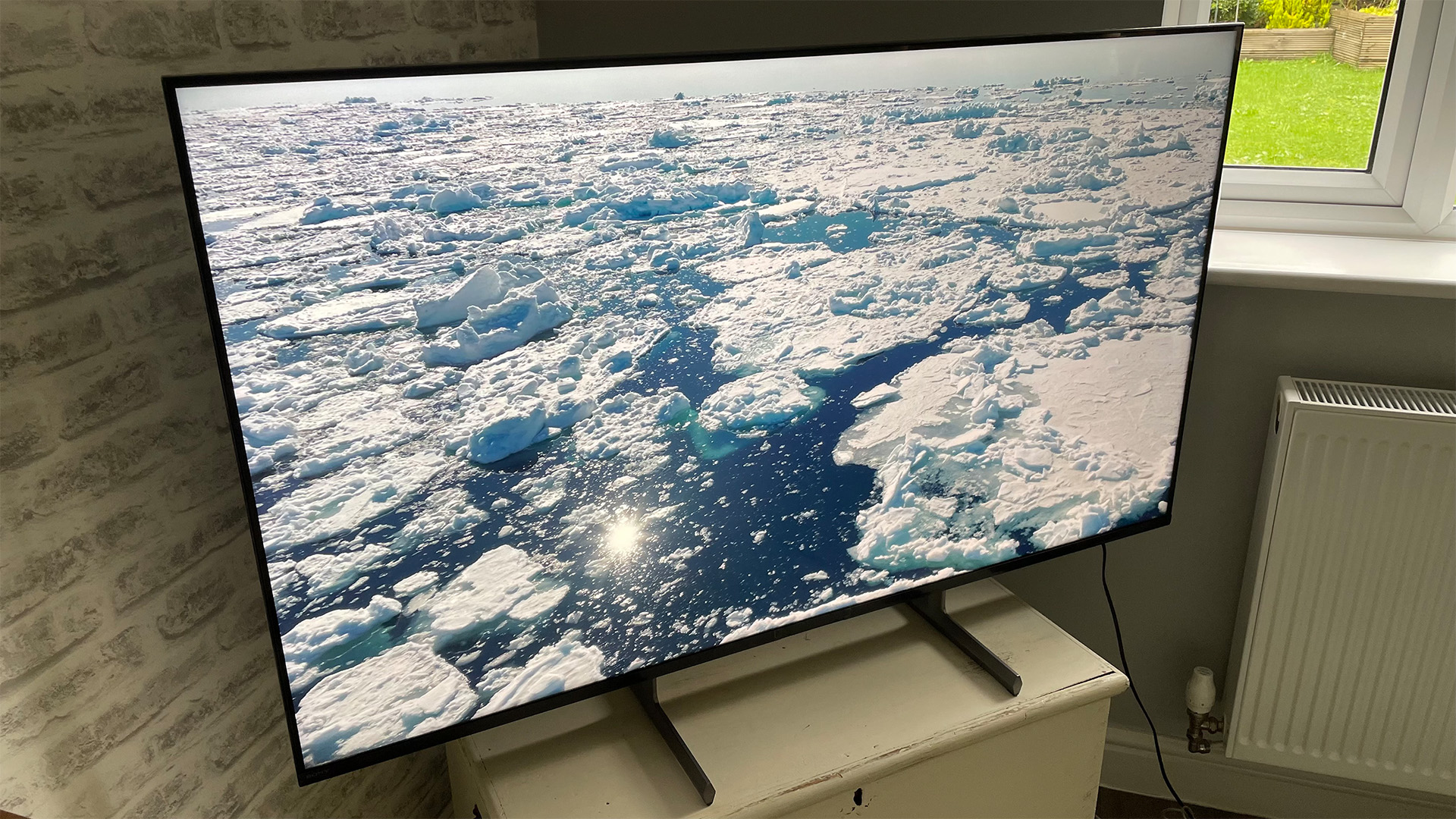
Sony’s X85 TVs have always delivered respectable picture quality, but the addition of local dimming to the X85L takes things to a new level.
As we would hope, adding local dimming, even over just 24 separate zones, clearly boosts the screen’s contrast performance when showing relatively dark scenes, giving them more impact and a more convincing HDR feel as the screen is able to deliver a wider range of light between the picture’s darkest and brightest areas.
The extra level of light control across shots that contain a tough mix of bright and dark content, such as those in the slaughter house near the start of It on 4K Blu-ray, also helps such scenes look more three-dimensional and brings out more subtleties and accuracy in the screen’s rendering of dark colours.
The brightest parts of HDR images deliver more punch than they have on previous X85-level models, with the intensity of such highlights looking all the stronger because they’re able to appear against impressively deep black levels thanks to the efforts of the local dimming engine.
Remarkably, given that the X85L only carries 24 separate dimming zones, these local dimming-related improvements are delivered without, typically, the picture suffering badly at all with the sort of light blooms/halos around stand-out bright objects that local dimming systems so often throw up.
The X85L’s screen is better than most at soaking up reflections, too, making it easier for dark scenes to remain watchable even in a fairly light environment.
The X85L also handles sudden changes in brightness very well, avoiding the sort of distracting backlight brightness ‘jumps’ where a scene cuts between dark and bright content you get with TVs equipped with less sophisticated picture processing systems.
In fact, the longer you watch the X85L the more you start to realise that its greatest strength overall is the incredibly deft way its processing marshals all of the different elements of image quality to deliver pictures with so much balance, refinement, subtlety and insight that they frequently feel like they should be coming from a high-end TV rather than a mid-range one.
This is apparent, as we’ve seen, in the X85L’s use of light, but it’s arguably at its most potent with the screen’s colour performance. For one thing, the set retains impressively rich saturations in dark scenes, avoiding that flat, cool look that so many other mid-range and budget TVs tend to be infiltrated by during dark sequences.
The X85L isn’t bright enough to deliver massive colour volumes during bright scenes, but such content still looks vibrant by typical mid-range TV standards. And with both dark and bright scenes the subtlety with which the X85L manages to render subtle colour shifts and blends is exceptional – especially considering it’s using Sony’s X1 processor rather than the latest, more potent Cognitive XR system.
This subtlety ensures that skin tones look particularly great by mid-range TV standards, and the colour finesse in conjunction with the improved light controls creates a picture that looks gorgeously packed with the sort of infinitely small but no less important touches that creatives pour into mastering the most beautiful movies and TV shows.
One slightly unusual feature of the X85L’s pictures, given what we’ve said about how natural and refined they look, is that its best results arguably occur when it's running in its Standard picture preset rather than the Cinema mode which you might ordinarily expect would give the best results (and which actually does give the best results on many of Sony’s other TVs).
The Cinema mode on the X85L does, to be fair, deliver the most refined balance with some picture elements, but its images also tend to suffer with more noticeable backlight blooming effects, and very unexpectedly can also lose some shadow details in the darkest picture areas that remain visible in Standard mode.
Having mentioned a couple of issues with the X85L’s pictures, we might as well throw in a few more. First, perhaps because it’s still not the brightest mid-range HDR TV around (it’s not even half as bright as the recently tested and similarly priced TCL 65C845K, for instance), very bright highlights can clip a little (lose subtle shading information). Occasionally a really dark scene can cause the TV’s dimming zones to display a little instability while using the otherwise excellent Standard preset too, and side-by-side comparisons actually find the TCL 65C845K achieving deeper black levels during the darkest scenes than the KD-55X85L does (though the Sony set is still impressive overall in this respect). Finally in the negative column, very bright HDR scenes can sometimes look slightly soft, even with native 4K sources.
The X85L very much deserves to have us finish our discussion of its picture quality on a high, though. Which we can do by saying that while some bright exteriors can look a little soft, interiors and relatively dark scenes can actually look unusually crisp and detailed thanks to the screen’s ability to bring out subtleties of such content that most similarly priced TVs miss.
Even more impressive is how well the X85L handles motion, with some of its excellent motion processing options managing to reduce judder without creating the dreaded over-smooth soap opera effect; generating unwanted processing side effects; losing resolution with moving objects; or looking processed and unnatural. This is another area, along with less blooming and a generally more balanced, refined and cinematic picture feel, where the X85L scores a clear advantage over its aggressive, ultra-bright TCL C845K rival.
Sound

Like its pictures, the X85L’s sound is more about subtlety than aggression. Maybe to a fault, actually, as its attempts to keep everything in balance and proportion seem to be behind fairly conservative limits on its maximum volume and the distance it can cast sound away from its bodywork.
The X85L being aware of and working within the limitations of its speaker design, though, also yields some welcome strengths. So details in a mix, both subtle and bold, are reproduced with excellent clarity and proportionality. Treble doesn’t typically become shrill under duress either, and while the TV doesn’t have the power to keep opening up all the way to the very loudest parts of the most aggressive action scenes, it does at least avoid the sense of sound falling away/collapsing on itself under extreme pressure that many TV speakers exhibit.
Finally, while bass is only moderately present in terms of both the depths it can reach and its weight within the overall mix, it doesn’t become over-dominant or succumb to buzzing, crackling or dropouts like some more bass-heavy TV sound systems do.
Of course, while the X85L sounds good for a TV, particularly one in its price category, it will be comfortably beaten by even a decent and relatively affordable soundbar.
Verdict
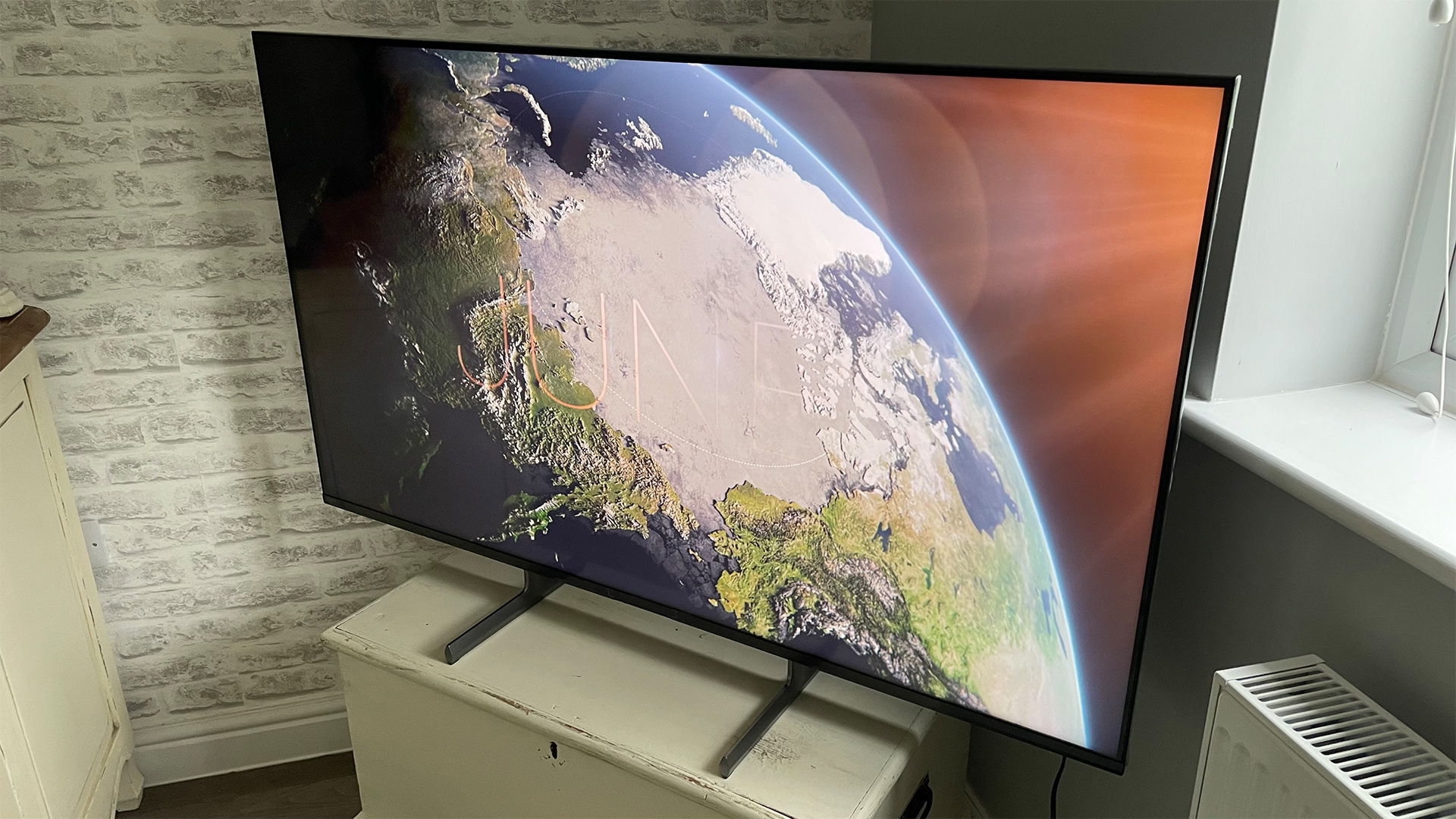
The Sony X85L isn’t the showiest mid-range TV in town. Especially since TCL’s C845K recently rewrote the rulebook on the sheer amount of raw spectacle – for sound as well as pictures – we can expect to find for the same sort of mid-range money. The 55-inch X85L’s pictures, though, are gorgeously refined, helping them achieve a beautifully natural finish packed with the sort of subtleties and niceties, especially when it comes to colour and contrast, that professional content creators work so hard to build into their ultra-refined and cinematic masters.
This should make the Sony X85L hugely appealing to any AV fans on a budget who appreciate the finer things in picture quality life.
SCORES
- Picture 5
- Sound 4
- Features 4
MORE:
Read our review of the TCL 55C845L
Also consider the Amazon Fire TV Omni
Read our Hisense 55U7KQ review
Best 55-inch TVs: smart, 4K, HDR and OLED TVs
What Hi-Fi?, founded in 1976, is the world's leading independent guide to buying and owning hi-fi and home entertainment products. Our comprehensive tests help you buy the very best for your money, with our advice sections giving you step-by-step information on how to get even more from your music and movies. Everything is tested by our dedicated team of in-house reviewers in our custom-built test rooms in London, Reading and Bath. Our coveted five-star rating and Awards are recognised all over the world as the ultimate seal of approval, so you can buy with absolute confidence.


